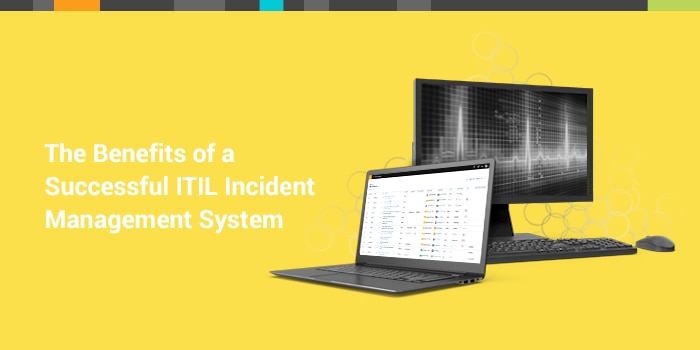Incident Management Process Flow for ITIL Incidents
Incident management is one of the critical functions of IT. So much so, in fact, that many users in your own organization may be under the impression that IT serves in little another capacity. Indeed, ITIL incident management is such an important focus for IT, that some confusion about what else IT does is understandable. This is even more prominent for organizations that have effective incident management policies in place. Incident management, if handled effectively, is a source of value for any organization. If it is not, and it goes off the rails in any one of the myriads of ways in which it can, then it may quickly become a massive liability. This is why it is incredibly important to get incident management right. And, one excellent way to help ensure that all incidents are handled correctly is by establishing, executing, and maintaining adherence to an incident management process per the ITIL framework.Incident vs. Problem Management
One of the most problematic ways in which ITIL incident management can go wrong is with something that’s akin to mission creep. Incidents are not the same as problems, and effective incident management efforts must keep this distinction at their center or risk running amok. Incidents, as defined by ITIL, are unplanned reductions in service levels, or complete interruptions of service. When contrasted with their underlying problems, incidents are somewhat narrow in their scope. It takes incidents to identify problems, in most cases, to be sure. But attempting to address problems while dealing with incidents is problematic, and for a variety of reasons. For greater analysis regarding this distinction, you can read When Does an Incident Become a Problem, here on the Samanage Blog.Best Practices for ITIL Incident Management
ITIL incidents do not happen in a vacuum. Incident management is by necessity tied to a wide variety of other IT efforts that include Change Management, Problem Management, and Service Level Management. But (perhaps by necessity), it must operate independently of these other efforts to effectively work. One way to avoid mission creep in your incident management is to develop and adhere to an incident model. A solid incident model contains proven steps in the handling of incidents, an incident management process flow, as well as considerations regarding how the incident mirrors or complements other incidents that have already been dealt with. Also, a well-developed incident model also contains responsibilities for handling the incident as it impacts other IT areas of responsibility, steps for the preservation of evidence regarding the incident and its resolution, and escalation considerations for major incidents.Steps in an Incident Management Process Flow
The operation of the incident management process requires strict adherence to a set of codified steps. Failing to adhere to these steps creates opportunities for the incident management process to go sideways. Your organization’s exact response doesn’t necessarily have to reflect these exact steps in this exact order. But, some careful consideration should go into every step in your final defined process.- Incident Identification and Logging
- Depending on your organization’s SLAs, this step can take on many particular forms. Regardless, you must have a system in place for identifying what type of incident you are dealing with, and you must have a protocol in place for the beginning of documentation surrounding the incident.
- Incident Categorization
- Categorization of incidents is very important for determining the proper response and the priority of competing incidents since your resources are not infinite.
- Incident Prioritization
- First come, first served will not serve the overall priorities of any organization when dealing with incidents. A developed protocol for prioritization of incidents, dependent upon their severity, the potential reach of their impact, and their potential to harm service levels, must be in place for determining adequate incident response and the assigning of resources.
- Incident Response
- Diagnosis
- Escalation Protocols
- Investigation and Further Diagnosis
- Resolution and Recovery
- Incident Closure and Documentation
When Managing ITIL Incidents, the Process Is Paramount
The general process involved in the actual incident response stage of the ITIL incident management process flow is relatively static from organization to organization. And, while it is important to have designated responsibilities and to refrain from skipping steps in incident management, the parts of the process that most often get overlooked (and represent the largest opportunity for improvement in many organizations) are typically the steps that come before initiating the incident response. For incident management to move beyond a reactionary state and begin to realize its potential to positively impact larger IT efforts, it must ultimately be contextualized through proper identification, categorization, and prioritization. Interested in our incident management solutions? Take our 30-day Free Trial to see how the Samanage platform can benefit your business. hbspt.cta.load(41925, '0055ae3d-1a8d-47c5-87c4-623eab0234c9', {});
hbspt.cta.load(41925, '0055ae3d-1a8d-47c5-87c4-623eab0234c9', {}); 







